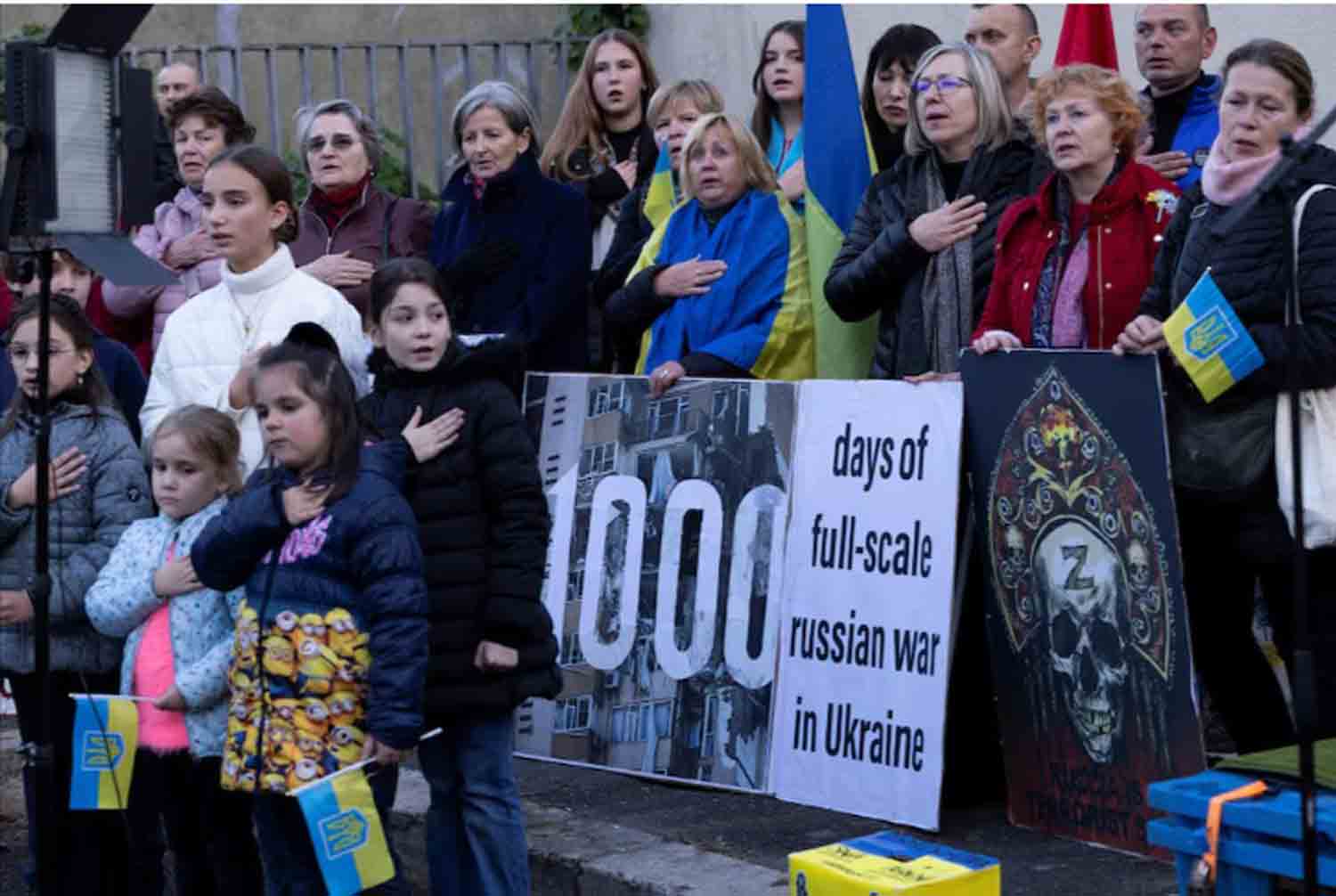Ukraine commemorated 1,000 days on Tuesday since the onset of Russia‘s full-scale invasion, with fatigued troops engaged in combat across multiple fronts. Kyiv continues to endure frequent drone and missile assaults, while officials brace for the possibility of Donald Trump returning to the White House in January.
In a significant development for the beleaguered nation, U.S. President Joe Biden authorized the use of U.S. missiles against targets deeper within Russia, which could potentially restrict Russia’s ability to launch attacks and supply its front lines.
However, military analysts warn that this substantial policy shift may be reversed if Trump assumes office again in January, and they caution that it alone will not be sufficient to alter the trajectory of the ongoing 33-month conflict.
The human toll has been devastating, with thousands of Ukrainian lives lost, over 6 million displaced as refugees, and the population reduced by a quarter since Kremlin leader Vladimir Putin initiated the invasion by land, sea, and air, marking the largest conflict in Europe since World War II.
Military casualties have been severe, though exact figures remain closely guarded. Public estimates from Western intelligence sources vary significantly, but most suggest that hundreds of thousands have been killed or injured on both sides.
The impact of the war has been felt deeply across Ukraine, where military funerals have become a regular occurrence in both major cities and remote villages, leaving the populace weary from sleepless nights filled with air raid sirens and despair.
The anticipated return of Trump, who has pledged to swiftly conclude the conflict—though without detailing his approach—raises uncertainties regarding the future of U.S. military assistance and the cohesive Western stance against Putin, while also opening the door to potential negotiations aimed at resolving the war.
ESCALATION SPURRED BY NEGOTIATION PROSPECTS
As Ukraine navigates a complex and unpredictable situation, a noticeable escalation has emerged, with both Moscow and Kyiv striving to enhance their military positions in anticipation of possible talks.
Russia has bolstered its forces with Iranian attack drones and artillery from North Korea, and has now deployed 11,000 North Korean troops. Reports indicate that some of these troops have engaged with Ukrainian forces in a section of Russia’s Kursk region, which Kyiv captured in August as leverage. A senior official from Kyiv noted that Pyongyang could potentially send up to 100,000 soldiers.
Meanwhile, Ukraine is deploying some of its elite units to maintain control over this small area of Russian territory. Kyiv claims that Russia has concentrated 50,000 troops in the region, while the Kremlin’s forces are making their most significant advances in eastern Ukraine since 2022, intensifying their efforts in both the northeast and southeast.
As winter approaches, Moscow has intensified its aerial campaign against Ukraine’s already strained power infrastructure, launching 120 missiles and 90 drones in the largest aerial assault since August.
In addition to U.S. authorization for strikes on military targets within Russia using American-supplied weapons, ongoing external financial and military support remains crucial.
Despite experiencing two years of moderate economic growth, Ukraine’s economy is currently only 78% of its pre-invasion size, following a GDP contraction of one-third in 2022. The country’s once-thriving steel and grain sectors have suffered significant damage.
RUSSIA INSISTS UKRAINE SURRENDER TERRITORY AND ABANDON NATO ASPIRATIONS
The U.N. Human Rights Monitoring Mission has confirmed the deaths of 11,743 Ukrainian civilians, although some officials in Kyiv believe the actual figure is significantly higher.
Last week, President Volodymyr Zelenskiy stated that Ukraine must strive to conclude the war through diplomatic efforts within the next year. However, he firmly rejected any discussions of a ceasefire without adequate security assurances for Ukraine.
The Kremlin has reiterated that its war goals have not changed since President Putin declared in June that Ukraine must renounce its NATO aspirations and withdraw from four regions of Ukraine that are partially under Russian control, which would effectively mean surrender for Kyiv.
A multitude of small Ukrainian flags now fills a section of Kyiv’s Independence Square, a site that once symbolized the mass pro-European demonstrations that led to the ousting of Ukraine’s pro-Moscow president in 2014.
In response to these protests, Russia annexed Crimea, a Black Sea peninsula, and supported a paramilitary uprising in eastern Ukraine that resulted in 14,000 fatalities before two rounds of negotiations in the Minsk format brought a temporary halt to the conflict with Kyiv.
Following a call from German Chancellor Olaf Scholz to Putin on Friday, marking their first conversation in nearly two years, Zelenskiy remarked that this action diminished the Russian leader’s isolation. He also expressed opposition to the notion of resuming Minsk-style negotiations.
“We want to make it clear: there will be no ‘Minsk 3’; what we require is genuine peace,” he asserted.
Discover more from Defence Talks | Defense News Hub, Military Updates, Security Insights
Subscribe to get the latest posts sent to your email.





